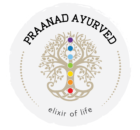Yogaasana for Postural Back Pain
Ever wondered why your back hurts even when you haven’t lifted any heavy weights, done strenuous work, or have any known deficiency? More often than not, it’s due to poor posture. When you sit for long hours, especially glued to a screen, with your back slouched or your neck tilted, your spine quietly takes the toll. Over time, this leads to postural back pain, stiffness, andfatigue. Here a few simple yoga asanas can help relieve that pain and realign your posture naturally. • Bhujangasana (Cobra Pose)• Makarasana (Crocodile Pose)• Setu Bandhasana (Bridge Pose)• Dhanurasana (Bow Pose) 1. Bhujangasana (Cobra Pose) Description: Lie on your stomach, palms placed next to your chest, legs extended. As you inhale, gently lift your chest off the floor, keeping your pelvis grounded. Elbows stay close to your body. Benefits: • Opens and strengthens the spine• Stretches the abdomen and chest• Counteracts slouching by reversing forward posture. 2. Makarasana (Crocodile Pose) Description: Lie flat on your stomach with arms folded under your head and legs relaxed. Close your eyes and breathe deeply, letting your back release and soften. Benefits: • Relaxes back muscles Soothes the nervous system• Provides gentle spinal decompression 3.Setu Bandhasana (Bridge Pose) Description: Lie on your back, knees bent, feet hip-width apart. Pressing into your feet and arms, lift your hips upward, forming a gentle arch. Hold, breathe, and then lower slowly. Benefits: • Stretches the chest, neck, and spine• Strengthens glutes and lower back• Opens the front body, countering forward-lean posture. 4. Dhanurasana (Bow Pose) Description: Lie on your stomach. Bend your knees and reach back to hold your ankles. Inhale and lift your chest and thighs off the floor, drawing your feet and torso together into a smooth bow shape. Benefits: • Deeply strengthens the entire back• Stretches the shoulders, chest, and legs• Improves posture by enhancing spinal flexibility.
Yogaasana for Postural Back Pain Read More »



